Catcher's Equipment Buying Guide
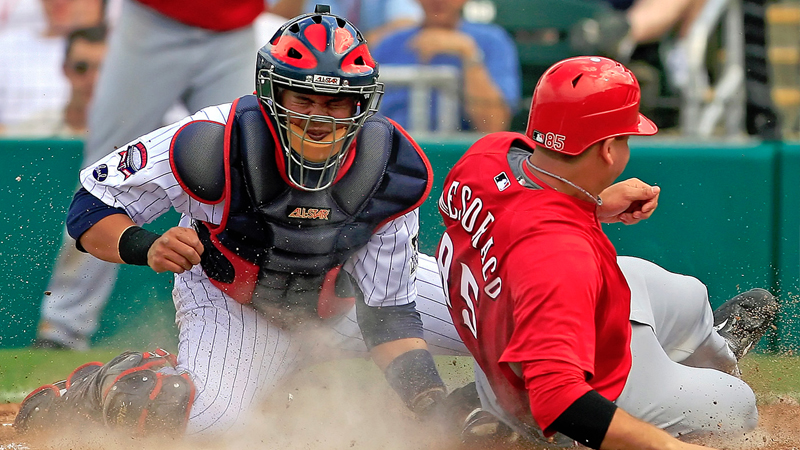
Catcher is one of the most respected and most difficult positions on the baseball diamond. When it comes to buying catcher gear it can be just as difficult to choose the appropriate gear for your needs and preferences. The needs and preferences are different for each player depending on their level of play and how long they have been playing. A catcher playing all year long will require the higher end gear to make sure it lasts a few seasons. Where as a catcher playing only one short season will not require the high end gear to last them a few seasons.
Something to keep in mind when shopping through the many choices of catcher gear is that the more expensive equipment is designed to be lighter and more energy absorbing than the less expensive equipment. This does not mean that the cheaper gear does not protect the catcher; it means that the higher end gear offers the protection with a more advanced material that weighs less.
Buying gear that fits correctly is the most important part of purchasing catcher gear. One of the biggest mistakes that you can make buying gear is getting gear that your kids can “grow into”. The reason for this is that catcher gear has to fit the right way. When the gear is too big, it moves around and can expose the catcher to injury. The bigger pads are also bulkier and slow the catcher down when making running plays or throwing down to bases. Knowing this, it is common to mix and match sizes and brand of gear to get the perfect fit. It is sometimes necessary for a child to wear a youth chest protector, youth leg guards and a large helmet if they have an exceptionally large head. The same is true for a high school player; sometimes they need an intermediate chest protector, adult leg guards and a small helmet.
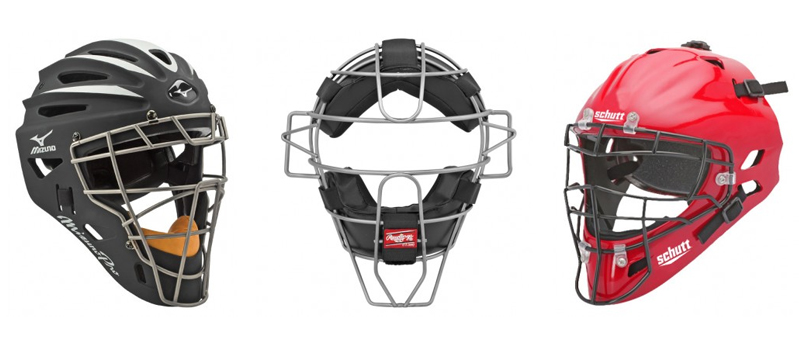
Catcher’s Helmet Fitting Guide
A catcher’s helmet needs to be very comfortable and is important to find one that will match your player’s needs the best. The catcher’s mask is constantly being taken off and put back on between batters and inning and on past balls, so it takes a lot of abuse. For this reason it is important to buy a helmet that can stand up to the abuse that you put it through.
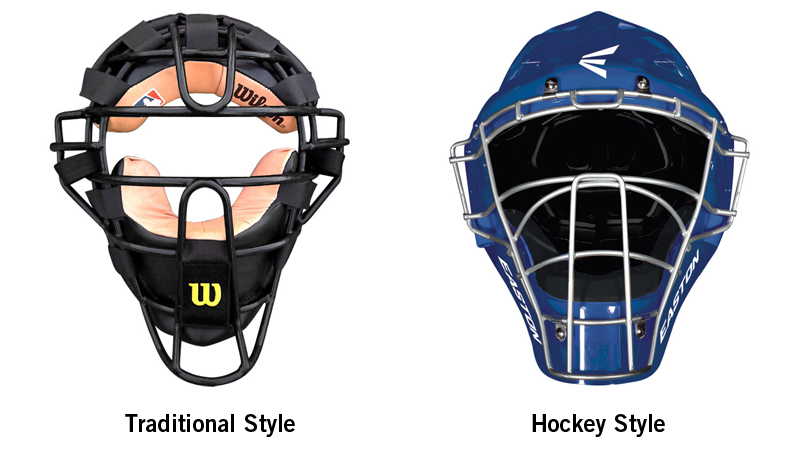
Another important aspect is deciding what style of helmet to wear, the traditional mask or the hockey style. The traditional style is worn with a backwards earless helmet and is preferred by players at higher levels of play because it is very easy to toss off and offers a good field of vision. However, it is banned in many lower levels of play, such as little league and tee ball. The hockey style offers the most protection and is the most comfortable. The two styles are both very adjustable to fit to the unique shape of the wearer’s head.
The traditional style typically has three straps. One on the top to adjust placement on the face and the side straps provide the tightness of the mask. The straps are attached to a harness that can be made of different materials to better grip onto the helmet. The hockey style helmet has similar adjustment straps with an additional option of moving the chin pad up and down, forward and backward to maximize the personal fit of the helmet.
Sizing
Each manufacturer has a different method of sizing, but for the most part, there are two sizes; youth and adult. Some manufacturers identify them simply as small and large. For the most part, it is based on hat size and every product has their size range. The way to find your hat size is to measure around your head, right above the ears with a fabric tape measure.
If you do not know your hat size, a rough way to estimate size is that kids younger than 12 years old tend to wear the small size and kids over 13 years old tend to wear the adult size.
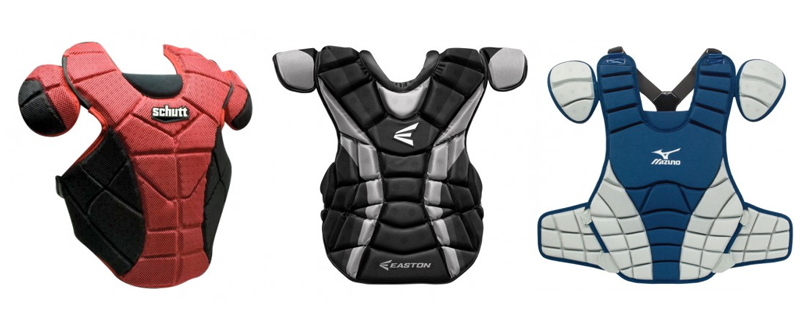
Chest Protector Fitting Guide
A chest protector is a very important part of the catcher gear because it protects the ribs, the heart, the collar bone and the stomach. There are a few differences in choosing chest protectors that can cause an incorrect fit. There are both baseball and softball chest protectors. The softball chest protectors have a break in the chest to better accommodate a woman’s shape. Another difference is that the softball chest protectors do not come with a removable groin protector. The baseball chest protectors have differences in which ones come with a groin protector. The groin protector is required in most youth leagues, but for leagues that don’t require it, it removes with Velcro or snaps. High school and higher baseball players do not need the groin protector and should instead use a cup.
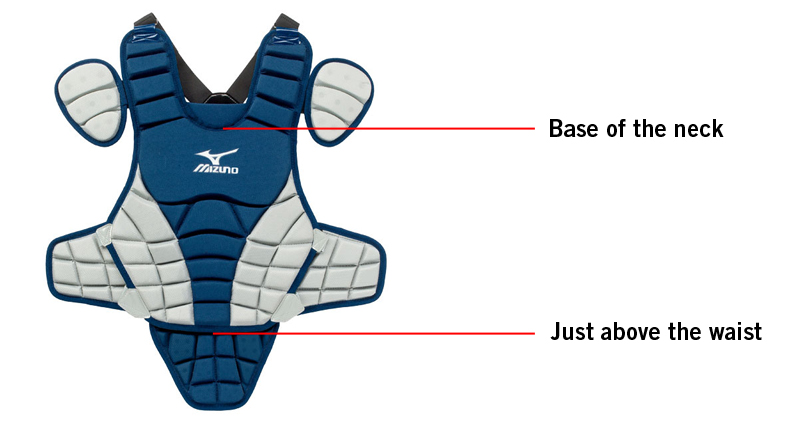
Sizing
To properly measure for your chest protector, start from the base of your neck and measure right above the waist line. It is important to take the measurement with light clothing on, a sweatshirt or jacket will cause an inaccurate measurement. This measurement does not include the groin protector. The reason you measure all the way to the waist is to cover the stomach from potential injuries.
Using the measurement you took, you want to choose a manufacture size that is within a half an inch of that measurement. Most manufacturers divide their sizing into three categories; youth, intermediate, and adult. These categories can be separated roughly by age as; youth as 9-12 years old, intermediate as 12-15, adult as 16+. These are only rough estimates and you should rely on your own measurement.
It is important to make sure that the straps on the back of the chest protector are properly adjusted to hold it in the right place. The strap attached to the top of the chest protector is the size adjuster. It is important to make sure that this is sized properly so that the pad is tight enough to cover the collar bone but not loose enough that it rises up into the chin when the player squats down. The side adjustment strap on the chest protector is to tighten the waist to hold the pad down so the player does not need to adjust it every time they stand up and down.
For further modifications of the chest protector, the shoulder pads on most products are attached with Velcro and can be easily adjusted up or down for the right protection. The pads on the neck of most chest protectors also have this adjustment.
When choosing between an expensive and inexpensive chest protector, the expensive one will tend to have higher quality materials. This is in addition to more ventilation to keep the catcher cool during those hot day games. The more sophisticated materials in the high end chest protectors are designed to better absorb ball impacts. This means less energy is transferred to the player and less energy is transferred to the ball. This prevents the chance for a ball to bounce off the chest protector and roll away when a base runner is heading down to second base. This can happen with lower end gear that uses hard padding.
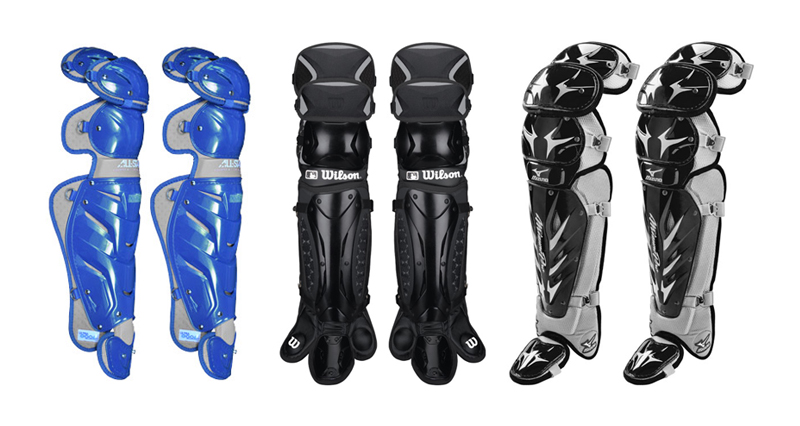
Leg Guards Fitting Guide
Leg guards are a catcher’s best friend. It saves them from constantly scraping their knees every time they have to stop a low pitch in the dirt. Leg guards have come a long way in the last few years. They are made of stronger plastics, higher energy absorbing padding and a better protection design. The additional protection is designed to come up higher above the knee to protect the lower thigh area.
The higher end leg guards are designed to last through a lot of abuse and especially the padding provided in the knee cup. Each manufacturer has their version of a high impact, supportive knee pad. This is a very important option for catchers to consider when purchasing new gear. The more often a catcher plays, the better a high end leg guard would suit them.
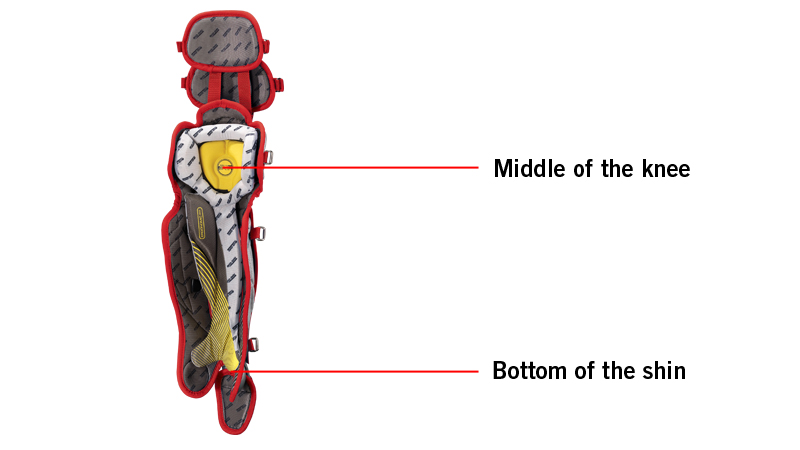
Sizing
To properly measure for a catcher leg guard, use a cloth tape measure and go from the middle of the knee to the top of the ankle bone. This is a way to get a rough estimate. The next part comes when looking a manufacturer sizes. Using the measurement you took, you should choose a size within a half an inch of the measurement. Most manufacturers divide their sizing into three categories; youth, intermediate, and adult. These categories can be separated roughly by age as; youth as 9-12 years old, intermediate as 12-15, adult as 16+.
Leg guards are just as adjustable as chest protectors with the straps that hold it in place. It is important to adjust these before using them in a game for the first time. It is also important to wear baseball pants while adjusting them so that you can get a proper measurement and feel for the leg guards. Besides the straps, the knee cap is also adjustable. It is attached with Velcro and can be adjusted up and down to ensure a proper fit.
The toe and foot protector on the leg guards are also usually adjustable to make longer and shorter. Some even come with an additional extension to make it longer. These usually attach with a snap or button. These toe protector helps prevent a ball hitting off of a cleat and injuring a toe or top of the foot.
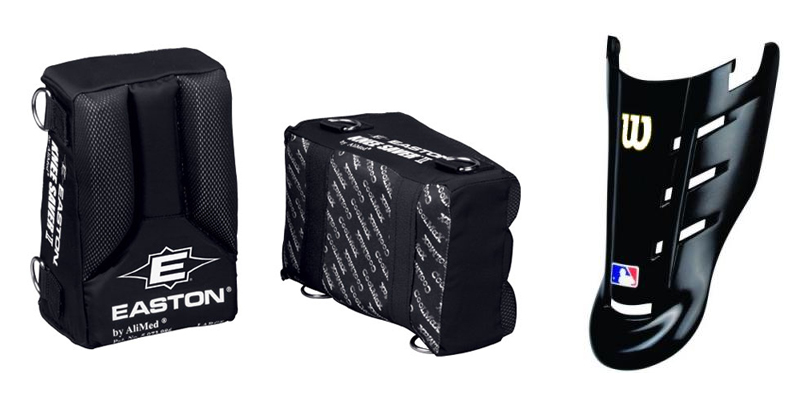
Catcher Accessories Fitting Guide
There are a few accessories that most catchers swear by, knee savers and throat protectors. These two accessories offer additional comfort and protection. They do not cost much and are great for any experience catcher.
The throat protector is a piece of plastic that attaches to the lowest bar on the catcher’s mask. It can be attached by Velcro, snaps, clips, or just a shoe string in some cases. The best choice is one that is loosely hanging so that it still easy for the catcher to turn their head without the chin protector getting caught.
Knee savers are designed to help prevent pain in knees of catchers. This is done by attaching the extra pads to the back adjustment straps of the leg guards. This passes the strain of the player’s weight through the pad instead of through the player’s knees. This is most used by older catchers, but can help prevent knee problems from ever happening in young catchers. The only down side to using the knee savers is that some coaches say smaller catchers rely on the knee savers too much and become lazy behind the plate. With proper training, this can be easily avoided.
